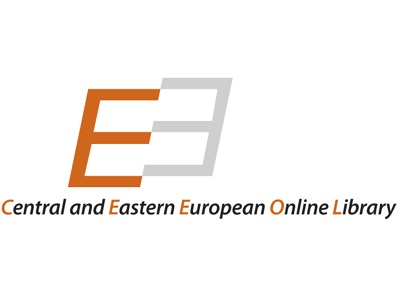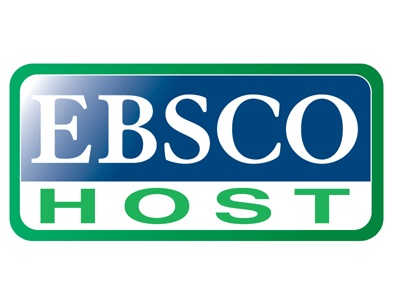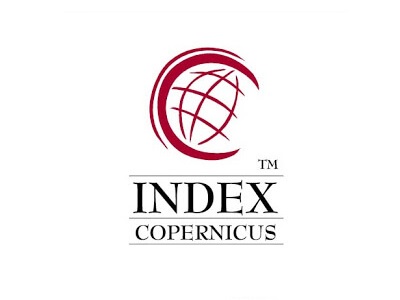
Scientists have tried to find out what are the main mechanisms explaining human behavior – genes or environment, nature or nurture? For a long period of time, cognitive-developmental and behavior-analytic approaches to the study of human behavior have been considered as totally incompatible, yet today organismic and contextualist perspectives are more and more often brought together by scientists from various fields of research. Behavioral epigenetics, a really young and controversial branch of science, applies epigenetics’ principles to the study of various physiological, genetic, environmental and developmental mechanisms of human behavior. This is why a question arised – could we apply the same principles for academic research? Behavioral epigenetics could explain academic behavior in terms of preferred research approaches and designs, productivity and performance, publishing or collaboration between individuals, as a consequence of exposure to environmental adversity (lack of financing, hard competition for funds), social stress (deteriorating image and position of researchers in society) or traumatic experiences (frequent change in financing and promotion criteria, article rejection and negative reviews). Additive influences of nature and nurture type of factors on the development of exceptional competences and performance have already been intensively studied, and lately attention shifted to the interactions and reciprocation of nature and nurture, including nature mediated or revealed through nurture. Studies suggest that physiological and psychological characteristics acquired during the lifespan could even be transmitted as a kind of soft inheritance, which could explain a specific behavior. In fields as health, medicine and biology, as well as in cultural studies, analysis performed on twins growing up in different environmental conditions may offer an answer as far as epigenetics is concerned. In academic research, some clues could be offered by analyzing researchers from genetically related countries, such as Romania and Moldova, grown up and developed in significantly different environmental conditions. The present essay tries to launch into discussion this potential explanation, recognizing that significant conceptual shifts and further research would be needed to fully understand the dynamic of interactions between genes, environment, epigenetics, social and economic processes for the behavioral changes of academics in terms of research involvement and academic performance.
- Type: Editorial
- Published on: 13th March, 2018
- Pages: 7-10
- Received: 18th March, 2018
- Final revision and acceptance: 12th March, 2018

Broadcasting TV occupies a significant position in the community. Therefore, all the countries in the world give attention to TV broadcasting business. In Indonesia, the government requires TV stations to broadcast locally, except through networking. In this state, there are 763 private TV companies broadcasting free to air. Of these, some companies have many TV stations and build various broadcasting networks. In this article, the author reveals the substantial TV stations that control the market, based on literature studies. From the data analysis, there are 14 substantial free to network broadcast private TV broadcasters but owns by eight companies; these include the MNC Group, EMTEK, Viva Media Asia, CTCorp, Media Indonesia, Rajawali Corpora, and Indigo Multimedia. All TV stations are from Jakarta, which broadcasts in 22 to 32 Indonesian provinces.
- Type: Case Study
- Published on: 11th March, 2018
- Keywords: Regulation, Parent TV Station, Private TV station, Business orientation, TV broadcasting network
- Pages: 11-20
- Received: 7th February, 2018
- Final revision and acceptance: 4th March, 2018

In the context of an economy placed on ”fast mode”, how a company can stay in line with an accelerated trend of entrepreneurial innovation and change and how a company can approach the customers’ management? In order to facilitate the companies’ activity on the market and preserve customer relationship, recent technological innovations created management systems based on three key activities: gathering customer information, information dissemination in the organization and information use for product and service innovation and improvement. The present paper tries to provide an answer to the above mentioned questions using an overview on current approaches in Customer Relationship Management (CRM) by introducing the concept of CRM, where it all started, how it currently works and which are its future trends.
- Type: Review Article
- Published on: 20th May, 2018
- Keywords: Innovation, CRM Market, Vendors, Future trends
- Pages: 21-25
- Received: 20th April, 2018
- Final revision and acceptance: 18th May, 2018

The purpose of the article is to summarize the major aspects that characterize current labour market expectations and to compare them to the criteria that emerge as a condition of the “flow state”. As a result of the above, conclusions are drawn and support the organizational justification of work experience management and provide an initial basis for practical application. It can be concluded that achievement of the flow experience might be a desirable situation on organizational level, because it might result in improved employee loyalty and a stronger relationship between the individual and the organisation, thus employee retention is promoted as well. However, reaching the flow experience has a number of requirements; it cannot be realised unless these conditions are met. Obviously, the realization of these factors can be supported by the organizational HR system through its diverse functions, out of which the following ones act as the closest links: job design, motivation, career planning, occupational safety, health preservation and performance appraisal.
- Type:Review Article
- Published on: 20th May, 2018
- Keywords: Flow, HR, Loyalty, Retention, Experience
- Pages: 27-36
- Received: 5th April, 2018
- Final revision and acceptance: 18th May, 2018

It has become evident that organizational rewards attract human resources, motivate and maintain them into companies. There is no perfect combination of rewards into an attractive salary package, as they are perceived differently by the employees of each company. Moreover, there are differences in preferences and among employees of the same company. This attraction for a reward or another depends on: the proffesional experience, the organizational culture, the individual values, etc. Of course, the specificity of business also influences the rewards in one way or another. The purpose of this paper is to design a research proposal through which we are able to analyze the preferences for organizational rewards of the employees from the Romanian companies. Suggestions for practitioners and some preliminary results and recommendations for further research are provided.
- Type: Case Study
- Published on: 20th May, 2018
- Keywords: Compensation, Benefits, Total reward, Romanian companies, Preferences
- Pages: 37-42
- Received: 23th April, 2018
- Final revision and acceptance: 18th May, 2018

Micro finance in India has developed in decades from an idea to implementation to many success stories to an overall success. The early dawn of the idea of micro financing was to provide the capital to the population which was considered the bottom of socio economic pyramid so as to carry out the small household business and this idea has gradually grown up to become the way to help improve the socio standards of the poor people. India is the country of villages, more than 70% of the nation’s population resides in the rural areas of the country and 60% of this rural population depends on agriculture for living. In such situation the micro financing can play a vital role in making the rural people’s life easy. In a developing country like India with a lot of people residing in rural areas, micro finance is undoubtedly the best implementation. Self Help Groups of India has emerged as the world’s largest and most successful network of Community Based Organisations. The main goal of an SHG is to elevate the living conditions of the rural poor with a maximum emphasize on women. The present paper’s objective is to explain the situation of micro finance in India and to explain the main channel of micro finance in India which is SHGs and the details of the SHGs.
- Type: Review Article
- Published on: 27th May, 2018
- Keywords: Micro finance, Self Help Groups, Rural life upliftment
- Pages: 43-49
- Received: 21th March, 2018
- Final revision and acceptance: 25th May, 2018

Only enterprises with adequate information and ability to convert them into organizational knowledge are able to comply with the challenges in our globalized and accelerated world. Account has paramount importance in economic links between enterprises. It is divided into 2 sections: balance sheet and profit and loss account. Access to information is possible if the notes to financial statement include information that contribute to the better interpretation of the other part of the account. Decision-making based on unadequate knowledge further increases the otherwise not low economic risks.In the research we look into whether the notes to financial statements conducted by the enterprises include information that facilitate the collection of necessary financial knowledge for partner enterprises. Notes to financial statements of enterprises with NACE Code 62 – IT services as their principal activity were used in the analysis. The use of text mining helps us to reveal to what extent notes to financial statements comply with the Act on Accounting.
- Type: Review Article
- Published on: 10th June, 2018
- Keywords: Giving information, Account, Text mining, Information
- Pages: 51-57
- Received: 26th May, 2018
- Final revision and acceptance: 5th June, 2018

In economics, the concept of resilience illustrates the adaptability capacity of a system after an external shock. The goal of the empirical analysis presented in this paper is to investigate the labor market resilience of Romanian Counties relative to the economic crisis whose negative effects occurred since 2009. The counties are compared in terms of resistance or sensitivity to the shock, speed of recovery after the shock. These dimensions were assessed by means of statistical analysis of employment and unemployment rate evolution. With respect to the factors that could influence the trajectory of the system after a recessionary shock, this study discusses the correlation between different types of resilience and economic diversification.
- Type: Case Study
- Published on: 8th July, 2018
- Keywords: Labour market resilience, Regional, Employment, Recessionary shocks
- Pages: 59-66
- Received: 19th June, 2018
- Final revision and acceptance: 7th July, 2018

Volunteering for a social cause is a leisure activity that gains more and more interest in the last years in Romania. Most social non-profit organizations involve volunteers in activities of short-term which they cannot pay. The lack of monetary rewards makes room for the need for internal marketing procedures such as: communicating a vision that would attract volunteers, instruction for the people involved and a performance-based rewarding system. Internal marketing procedures are poorly adopted in Romanian non-profit sector. A philosophy, strategies, and tactics of internal marketing could offer suitable solutions for non-profit organizations managers in maintaining volunteers, impacting positively volunteer's satisfaction and organizational commitment according to previous studies. This research analyses the measure that internal marketing procedures are adopted in Romanian non-profit sector. A questionnaire was applied to a sample of 300 volunteers from 144 social non-profit organizations. The results show that the performance-based rewarding systems were the most poorly adapted.
- Type: Case Study
- Published on: 30th August, 2018
- Keywords: Internal marketing, Non-profit organization, Volunteer's satisfaction, Organizational commitment, Performance-based rewarding system
- Pages: 77-83
- Received: 2nd August, 2018
- Final revision and acceptance: 3rd September, 2018

When dealing with the economic science quantitative approach, many researchers instantly think of resorting to a parametric analysis, be it based on simple or multiple regressions, Bayesian inferences or on other specific techniques. Unfortunately, this is not always possible, as the available data is sometimes, inappropriate for a parametric use. In such case, the non-parametric-based analysis becomes a key quantitative instrument at the disposal of researchers, which it encompasses a large range of items highly useful in revealing the non cause-effect correlational relationship between variables or for statistically testing various aspects specific to such type of data, elements described in brief in the present paper.
- Type: Review Article
- Published on: 10th December, 2018
- Keywords: Economic science, Quantitative analysis, Non-parametric instruments, Cross-tabulation, Correlational relationship
- Pages: 85-90
- Received: 15th October, 2018
- Final revision and acceptance: 8th December, 2018

For agriculture, precision farming represents the future - by increasing incomes and reducing the environmental burden at the same time. Precision management produces surpluses in yields, revenue, and profits, but not immediately. The additional income potential is expected to increase by 20% to 50%. Farmers mostly introduce precision farming in order to relieve workers. Although many farmers are afraid of using new technologies, the use of information technology in agriculture will be unavoidable. However, technology is fundamentally expensive, it is not widespread, and farmers currently use only a few elements of the technology available. Moreover, following the precautionary principle, technology used in farming covers only a part of their agricultural land. So farmers need to learn to produce more precisely than before, in a knowledge-based way.
- Type: Case Study
- Published on: 10th December, 2018
- Keywords: Precision farming, Information technology, Internet of Things, Farming 4.0
- Pages: 91-99
- Received: 31th October, 2018
- Final revision and acceptance: 8th December, 2018

The access to data in the databases of an organization depends on different levels of specific information security. If the security level is too high, it can cause delays or blockages in the implementation of priority tasks. The study tracked the flexibility of IT security related to the access to a network and how it improves the time/cost ratio in the targeted departments. The findings suggest that there is a strong link between the level of security concerning the access to information in databases and the performance of the employees. IT changes have saved time and reduced costs, increased productivity and performance and also technological and managerial flexibility.
- Type: Case Study
- Published on: 22th December, 2018
- Keywords: Managerial Flexibility, Productivity Management, Database Security, IT&C Security, Technological Flexibility, Strategic Management
- Pages: 101-109
- Received: 12th December, 2018
- Final revision and acceptance: 20th December, 2018

The position of small and medium businesses in stimulating global economic progress has interested researchers in recent decades. Small and medium businesses account for the transition to a market economy playing an important part in innovation, income generation and dynamism in economy and employment. Depending on the approaches and purposes of the enterprises performance and its indicators have been variously classified. Furthermore, performance measurement systems are important tools as they provide enterprises with the necessary information to design, control and achieve their goals. The objective of this paper is to collect and analyse a set of performance definitions, indicators and measurement systems. The literature review is based on the research gathered from databases such as Emerald Insight, Elsevier and Google Scholar. The research papers cover the years from 1991 to 2018. The findings on the definitions of performance, its indicators and measurement system will be employed in the next stages of the research process.
- Type: Review Article
- Published on: 22th December, 2018
- Keywords: Performance, Financial performance, Non-financial performance, Small and medium enterprise, Measurement models
- Pages: 111-120
- Received: 13th December, 2018
- Final revision and acceptance: 20th December, 2018

The aim of the paper is to present the relationship between the concepts of innovation and business models in the Fourth Industrial Revolution. In this respect, the authors present the case of a German company, Deutsche Bahn (DB). Innovation constitutes a core factor that will secure our society's prosperity in the future, as it creates real and sustainable value. A key element in the successful path to Industry 4.0 is the expansion of new technologies or processes towards the development of innovative business models. The continuous worldwide changes, the shift from physical to digital or from closed-sources to open-sources and the new ways of doing business (networks) lead to the development of companies by creating and implementing business models in which innovation is constantly required. In order to reach the aim of the paper the authors used a quantitative research method and a case study. The findings of the research showed that innovation represents a key element in developing new business models that lead to better performances in any company that aims to be part of the Fourth Industrial Revolution.
- Type: Case Study
- Published on: 22th December, 2018
- Keywords: Innovation, Business Model, Fourth Industrial Revolution, Deutsche Bahn
- Pages: 121-130
- Received: 30th November, 2018
- Final revision and acceptance: 20th December, 2018

The role that social media is playing nowadays makes users' spreading electronic word-of-mouth much more easier. The present research aimed to determine the influence of brand attitude on brand advocacy. Previous research has shown that product performance, altruism (concern for helping others) and need for socila interactions are major antecedents of eWOM communication. A self-administrated questionnaire with a visual stimulus was used to collect data from 108 Romanian Facebook users. The results indicate that brand trust and brand tribalism are important antecedents of brand attitude. Online brand advocacy depends on the trust the consumers have on that brand and the status of members of their brand tribe, thus the ambassadors would promote the brand from their own initiative. Believing that a certain brand can help consumers improve their status in the community or society is a powerful factor that motivates online users to become brand advocates.
- Type: Case Study
- Published on: 30th December, 2018
- Keywords: Brand advocacy, Brand trust, Brand tribalism, Brand attitude, Negative word-of-mouth
- Pages: 131-140
- Received: 20th December, 2018
- Final revision and acceptance: 28th December, 2018

The evolution of digital technology and its applications in almost every field has led to the rise of numerous startups which, through technological platforms, offer a wide range of services and products. In the financial sector, this phenomenon has led to the creation of Fintech companies (Financial Technologies). Fintech is presented as game-changing and as an innovation capable of shaking up the traditional financial markets. The present study analyzes and discusses the importance of the Financial Technologies for the entrepreneurial ecosystem in Mexico. In addition, it provides an overview of the FinTech sector, its main trends, risks and the terms of the new regulation by comparing Mexico with Latin America. Finally, it discusses the key points of the Financial Technology Law in Mexico.
- Type: Review Article
- Published on: 30th December, 2018
- Keywords: Entrepreneurship, Fintech, Financial institutions, Startups, Fintech law
- Pages: 141-148
- Received: 21th December, 2018
- Final revision and acceptance: 28th December, 2018











